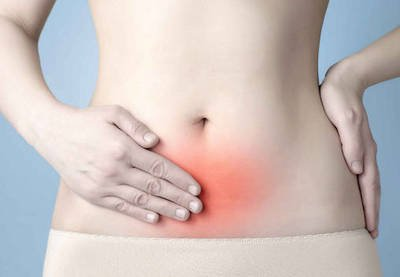Frequent Pelvic Pain in Women? It May be Related to These 'Behind-the-Scenes' Culprits
Many women experience pain in the lower abdomen, pelvic floor, perineum, or lumbosacral region, which is excruciating when it strikes. This situation is called pelvic pain.

In general, pelvic pain can be triggered by organic or functional lesions or abnormal mental stress in the female pelvic cavity organs. Pelvic pain is a difficult problem for many women. It occurs for complex reasons, and the degree of pain is not always proportional to the extent of the lesion.
So, what possible reasons could be related to pelvic pain?
About 80% of endometriosis patients experience chronic pelvic pain, sometimes during sexual intercourse. They also suffer from painful bowel movements and abnormal functioning of the pelvic organs. This is because the lesions of endometriosis compress and infiltrate the nerves.
If ignored, endometriosis may also cause a woman's fertility to decline. Therefore, if the patient feels pelvic pain regularly, it should not be taken lightly, and the cause needs to be clarified through examination. If it is caused by endometriosis, it can be controlled by reasonable treatment.
2. Chronic pelvic inflammatory disease
If there are pelvic pain manifestations regularly, it may be caused by chronic pelvic inflammatory disease. As a common gynecological disorder, chronic pelvic inflammation, during its development, the stimulation of local inflammation can make patients feel constant pain in the pelvic area. The pain lasts for a long time; sometimes, there is pain in the back area and lower abdomen.
For the occurrence of these conditions, the patient should pay attention to it and clarify the cause using examination. If the adverse symptoms are caused by chronic pelvic inflammatory disease, patients can be controlled by reasonable medication. Otherwise, if chronic pelvic inflammatory disease continues to develop, it will also lead to some complications that threaten women's health.
3. Pelvic vein congestion
When dilatation of the pelvic veins occurs, blood stagnation causes swelling of the uterus in the extreme adnexal area, which produces a painful condition. This happens due to an entire blood supply in women of childbearing age with active ovaries. This kind of pain is often characterized by a dull aching or falling pain in the lower abdomen, exacerbated by prolonged standing or activity, and patients may also experience pain during intercourse or bowel movements.
4. Pelvic adhesion
Frequent pelvic pain may not be ruled out as being caused by pelvic adhesions. Pelvic adhesion is the situation in which the tissues and organs in the pelvic area stick to each other, and it may be infected with bacteria and viruses, which leads to inflammation of these organs. In the process of inflammation, there may be tissue congestion, edema, and increased secretion. If not treated in time, there will be sticking.
Once pelvic adhesions are present, women may always feel pain in the pelvic area. Therefore, when inexplicably feeling pelvic pain, the patients should visit the hospital to prevent the disease from occurring with adverse effects.
5. Adenomyosis
Pelvic pain is associated with adenomyosis. Pelvic pain is the main feature in some women during the development of adenomyosis, which is related to the formation of lesions in the myometrium by the invasion of endometrial glands and mesenchyme. The main features of the disease in women are pelvic pain, dysmenorrhea, and menstrual disorders. If this condition occurs, it should be improved by timely medication and surgical treatment to prevent the severity of adenomyosis.
In fact, for women, pelvic pain can also be caused by a visceral, somatic, or neurological disorder. All of the internal structures in the pelvis can cause pelvic pain, and sometimes pelvic pain can occur not as a result of a single condition but as a result of a combination of factors.
Therefore, women should not be careless about pelvic pain for health's sake. Patients should investigate and understand the cause as early as possible and improve the pelvic pain manifestation naturally through reasonable ways. As a complete formula, the herbal medicine Fuyan Pill covers the treatment scope of chronic pelvic inflammation, endometriosis, and pelvic adhesions. Patients can take Fuyan Pill orally to help alleviate symptoms and inflammation.
In everyday life, patients should also develop good habits of life and work: A reasonable nutritional diet, active participation in physical exercise, and Improvement of body resistance can reduce the disease.
Recommended Readings:
Pelvic Pain? Endometriosis is Always the Culprit
Women Health: Know Your Uterus Health Status From The First Morning Urine
previous pageCan Drinking Lots of Hot Water Ease Painful Menstruation?
next page- Severe Endometriosis Treatment: Chronic Pelvic Pain Relief and Infertility Solutions
- Managing Adenomyosis: Easing Pelvic Pain and Heavy Menstrual Bleeding with Natural Approaches
- Daily Care Tips for Pelvic Inflammatory Disease Caused by Ureaplasma Urealyticum
- Is Fallopian Tube Blockage Causing Your Lower Abdominal Pain?
- Don't Let Pelvic Pain Trouble You! Traditional Chinese Medicine and Dietary Therapy to the Rescue
Testimonials
- Adenomyosis with Ureaplasma Urealyticum Cured by Fuyan Pill
- Tubal blockage with hydrosalpinx can be cured by TCM shortly
- Fuyan Pill Helps A woman with Adenomyosis Get Pregnant
- A Woman with Hydrosalpinx Is Cured with Fuyan pill
- Pelvic Inflammatory Disease Testimonials
- Irregular Vaginal Bleeding and Endometrial Thickening Cured by Fuyan Pill
- Pruritus Vulvae and Frequent Urination: Mycoplasma Infection Cured after 2 Courses



